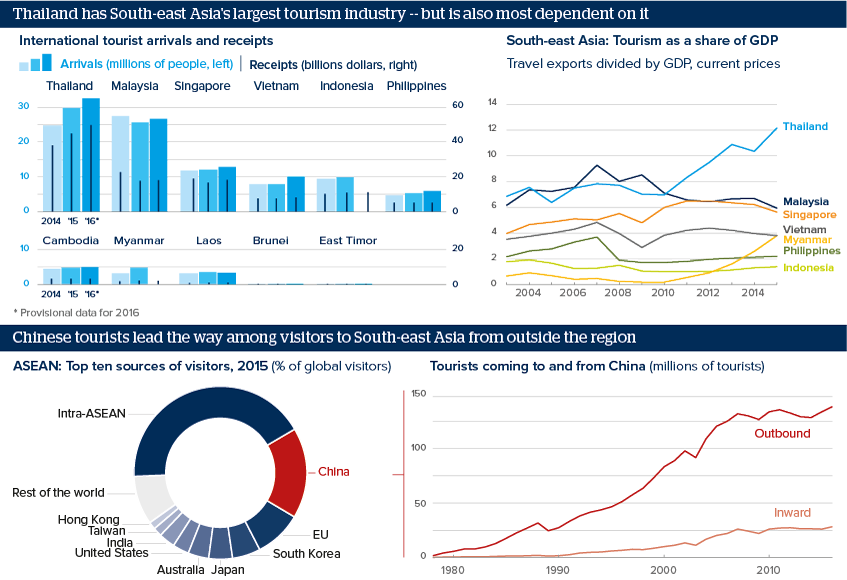South-east Asian tourism will need more investment
Increasing visitor numbers will challenge the region’s countries to boost spending on the tourism sector
Source: ASEAN Secretariat , UNWTO Tourism Highlights, 2017; World Travel and Tourism Council Economic Impact 2017; World Bank
Outlook
The ASEAN Tourism Strategic Plan 2016-2025 seeks to make South-east Asia a more competitive and sustainable destination for worldwide tourists, generating more revenue and jobs for the region. The UN World Tourism Organization anticipates that South-east Asia will have 187 million tourist arrivals -- 10.3% of the world’s total -- by 2030 compared to 9.2% in 2016.
Rising demand will require increased investment in the tourism sector from South-east Asian governments.
While archipelagic countries face particular difficulties in boosting tourism infrastructure, security risks may deter visitors to some of the region’s countries in the short term.
Impacts
- Singapore will continue to benefit from being a regional aviation hub.
- Vietnam is likely to see strong growth in tourism with rising visitor numbers and high investment.
- Indonesia will have to invest in seaports and airports across its disparate islands to improve connectivity.
- The threat of ethnic insurgency in Myanmar and Islamist militancy in the Philippines may hit tourist numbers.
See also
- Thailand’s democratic deficit will dampen GDP growth - May 1, 2018
- South-east Asian ecotourism boom comes with risks - Jul 26, 2017
- More graphic analysis
